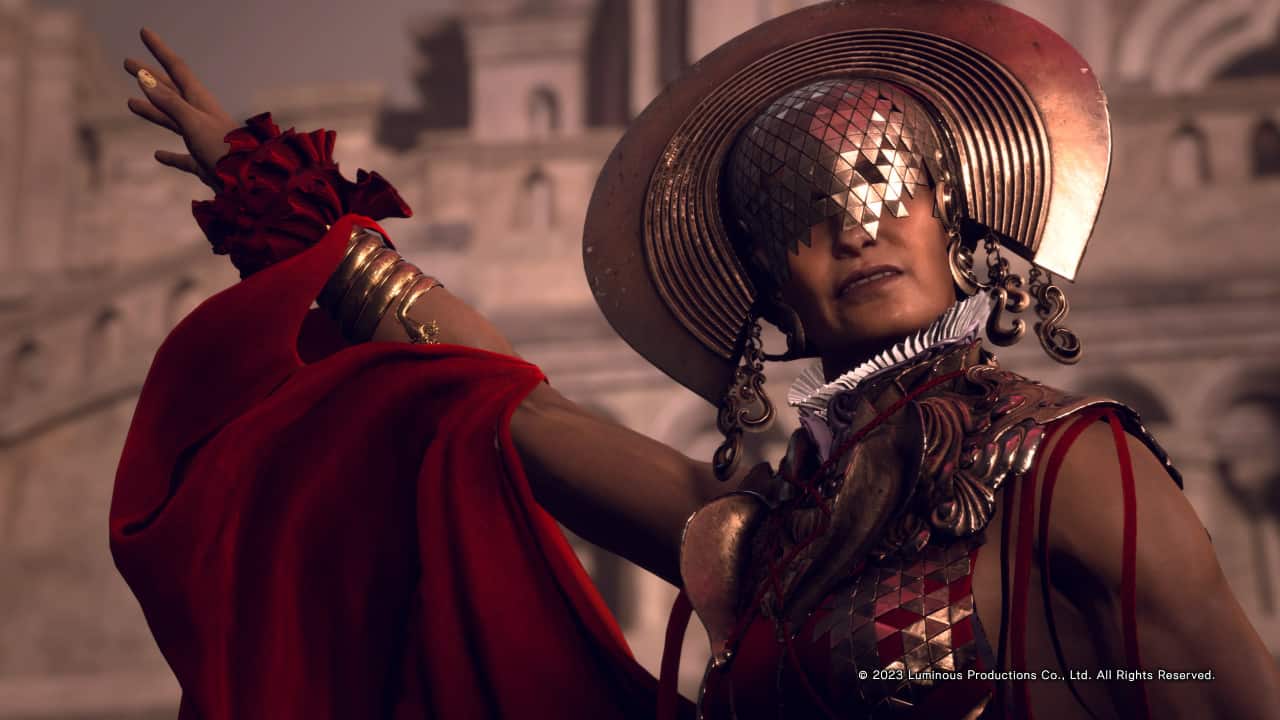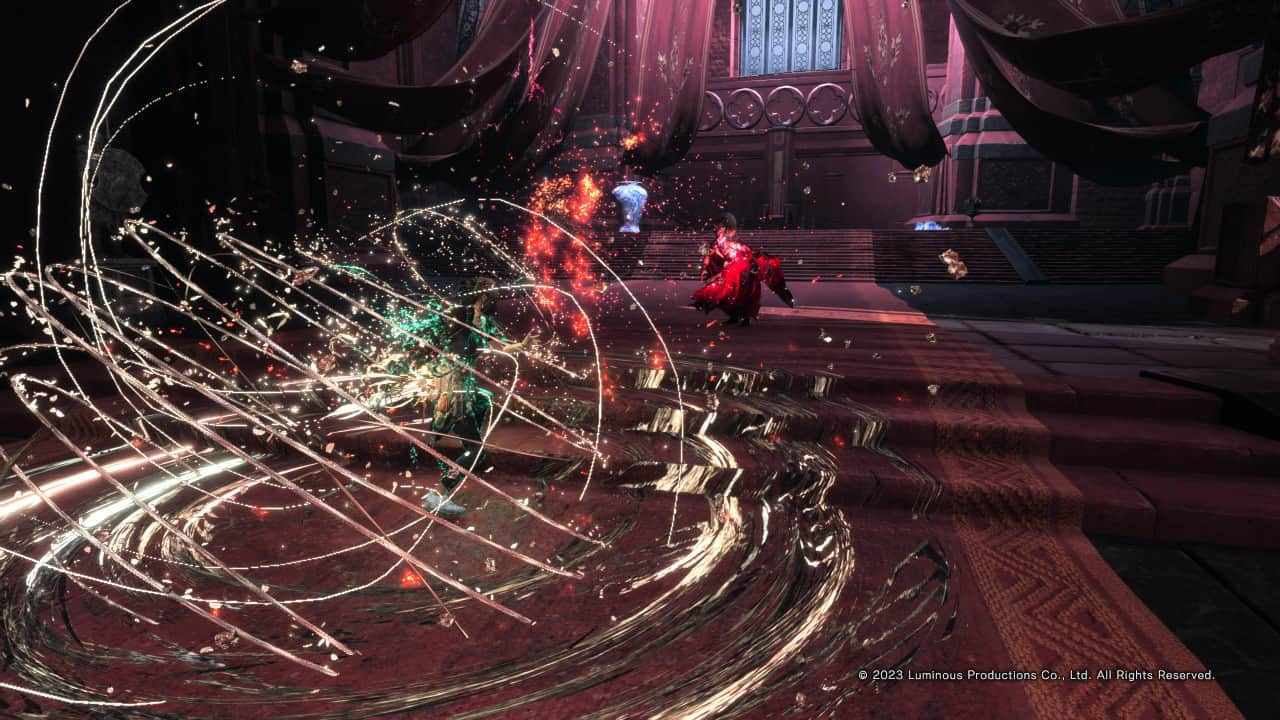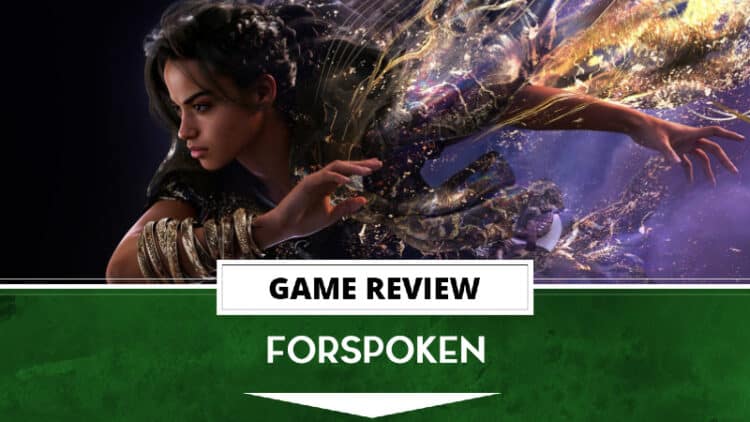Developed by Luminous Productions and published by Square Enix, Forspoken is a tale about a young orphan who ends up in a world on the verge of ruin. It’s up to Fray and her disembodied partner, Cuff, to stop the Break and save the world of Athia. If this sounds very Isekai-like, well, you wouldn’t be that far off.
Developer: Luminous Productions
Publisher: Square Enix
Release Date: January 24th, 2023
Platforms: PS5 (reviewed), PC (Steam)
Forspoken, An Isekai as Old as Time
The story begins with our protagonist, Alfre “Frey” Holland, in dire straits. To keep the story short, she’s been charged with grand larceny, her home has been burned down, and she has nowhere to go. A local gang has forced her into a corner, and she’s ready to risk it all just to get away. However, that’s when things begin to get interesting.
Sitting above the Holland tunnel in New York City, a slight burst of magic leads her to an abandoned shop. Inside, Frey finds an elegant piece of arm jewelry. When she puts it on, it transports her to a mysterious world covered in a deadly mist and with mysterious creatures. It’s also where we meet Frey’s ever-present companion, Cuff. Cuff is the source of her powers and the alleged reasoning for why Frey was thrown from the pan and into the corrupted fire that is Athia. Desperate to find a way back home, Frey works with Cuff to discover exactly what brought her to Athia.

Personally, Forspoken’s writing is the very definition of “out-of-touch.” As far as isekai tales goes, it fits the bill. Fray is magically teleported to a world on the brink of ruin, and she’s the only one who can help. To save Athia, she has to take on the Tanta’s god-like beings with magical abilities like her own who seem to be behind the Break. On the surface, it’s a tale that is inconsistent but manages to squeak by on occasion. The real problems lie with everything else inside of the writing.
First impressions are everything, and it’s simply hard to like Fray. She’s got a generic origin story growing up on the streets of New York City, involved with crime, and trusts no one. It doesn’t matter how people approach her, she often comes off as cold and callous, wanting nothing to do with her situation aside from escaping it. That’s not saying she does not improve because, like every story involving a similar protagonist, she does. It just takes too long for her growth to start showing. Ten chapters in and having slain two Tantas, she was still just as insufferable as she started out.
Then there’s the issue of Fray and Cuff. The pair are at their best when they’re interacting with one another because the story demands it. Cuff is a cool partner, and they actually develop a good rapport with one another. Outside of that, their banter is quite awful. I think the writing team came up with maybe 5 different lines per area, and they just play on repeat as you explore. You can adjust how frequently it happens, but it doesn’t solve the issue of how bad that dialog is.

Magic and Parkour
Combat in Forspoken is a mix of parkour and spellcasting. Armed with both offensive and supporting magic’s you’ll deftly dodge attacks while flinging a spell or two back at enemies. You can expand your magic by collecting mana, and completing objectives and challenges. Exploring is essential if you want to become stronger and unlock Fray’s full potential.
The gameplay is simply at its best when you’re in a wide-open space. Forspoken’s combination of mechanics pretty much relies on it. When you put Fray into tight spaces, like an abandoned town or watchtower, the camera becomes far too combative, which already struggles to keep up. It becomes much harder to dodge attacks when you can’t see them coming. Taking damage will also chip away at your “Grade” bar, which helps players find items and things like that.
Controls are easy enough to get down though I do feel spell management could have been handled better. R1 and R2 are for Fray’s offensive abilities, L1 and L2 are for supporting spells, while pressing L2+R2 will cast Fray’s “ultimate” spell. Certain enemy types have specific resistances and weaknesses you’ll want to take advantage of. You’ll need to use L1+L2 to change between magics as you unlock them. Forspoken takes FULL advantage of the trigger buttons, and it becomes a real pain when you’re in a pinch.
The world of Athia is fun to explore for the first hours, but it quickly starts to feel like a series of checklists. You’ll go to a town, kill enemies, pick up lore bits, solve a puzzle or whatever, then get rewarded. That’s every location you visit, and as far as I was concerned, I eventually prioritized certain things. Monuments increase Fray’s strength and health, Mulberry fonts unlock new spells, etc. Those were the things I kept an eye out for with the occasional trip to unlock a new nail design, cloak, or necklace. I pretty much ignored areas that offered experience and lore as rewards.
Not every engagement is worth taking part in, either. They offer a small amount of experience in return, which also results in a small amount of mana for “leveling up.” It’s simpler to just complete Detours (side quests), points of interests, and scoop up mana as you explore. Unless you’re a completionist, it’s simpler just to let the parkour get you to where the action is and reap those rewards.

A Broken Athia
I played the game on the PS5 and used both the Raytracing mode as well as the Performance mode. No matter which mode you go with, you can expect a pretty noticeable sacrifice, but you’ll get a consistent framerate. One great thing about Forspoken though, is that the game loads blisteringly fast. I do have a Samsung 990 Pro SSD installed in my PS5, which has shown significant decrease in load times, but for those without one, worry not. It makes Horizon: Forbidden West look slow. That said, if you have access to a 120hz TV, the game looks amazing in motion with the performance mode.
Athia itself is a beautiful world constantly changing as you progress deeper into it. One of the game’s detours is to take pictures of various locations for kids in Ciphal, the last standing haven for those unaffected by the break. It does a great job of showcasing a lot of the amazing scenery in the game. The aforementioned detour also unlocks new filters for the game’s photo mode, so virtual photographers will want to complete that as soon as possible. Where the game’s design falters is in its character design. Fray is a beautiful character, and she gets some amazing looking cloaks to wear, but the people of Ciphal are either plain looking or extravagantly goofy. Enemies constantly blend into their environments as well, making them hard to see, especially in the heat of battle. If there’s one thing the Break does well, it’s camouflage.
Another thing I didn’t like is the “Locked Labyrinths,” which are dungeons players go into in hopes of collecting gear. They’re full of enemies to fight, but the ones I did go into were just a series of rooms joined together by simple hallways. Though the bosses at the end of them were fun to fight, the rest of the labyrinth wasn’t as exciting, and visually they’ll leave players wanting. The game also utilizes some weird fonts and camera lens choices in the menus. Break corruption is indicated by this gold and black infection that works for great enemies visually, but doesn’t translate well into the menus. Menus also aren’t fun to navigate, with the touch bar being your only means to open the most important one, and it’s usually stuck in the lore section.
Then there’s the sound design. As far as the soundtrack is concerned, there’s not much to talk about as it just kind of fades into the background. Nothing notable ever really plays though it is worth mentioning that it’s inconsistent at times, especially when you get into battle. It’s loud and turns off almost as quickly as it turns on. There’s also this sound effect that plays when an enemy is detecting you. It’s an eerie sound that builds up, and it’s quite distracting. Voice-acting-wise, Forspoken does a terrible job. Most of the characters Fray meets on her journey feel phoned, especially the blacksmith. Fray herself is quite obnoxious, though the game’s weak writing is to blame for that. Otherwise, the voice acting is at its best when Fray isn’t randomly blurting out curse words and getting along with Cuff.

Forspoken – Master of None
Forspoken is a game that tries to do a lot with its world but doesn’t do any one thing well. The parkour, while smooth, feels clunky, the combat works best in open areas, and the story is marred by unlikable characters. Athia itself is full of things to do, but those things quickly become repetitive, and engagements just aren’t worth getting into.
After I played the game’s demo, I was told it was an early build of the game and that the final product would be better. If you played the demo, expect about the same experience. It’s not often that I lower my expectations after playing a demo, and the final product does not feel like an improvement.
Just like in the demo, I felt my time with Forspoken was, at best, a bland one. I feel Forspoken will be a game that people either love or hate. As far as fully-priced games go, I think it’s best to invest into Fray’s journey when this game goes on sale.
Review Disclosure Statement: Forspoken was provided to us by Square Enix for review purposes. For more information on how we review video games and other media/technology, please review our Review Guideline/Scoring Policy for more info.
Affiliate Link Disclosure: One or more of the links above contain affiliate links, which means at no additional cost to you, we may receive a commission should you click through and purchase the item.
Forspoken Review
Forspoken is a bland experience about a girl and her cuff trying to save a world blanketed in corrupting mists. It tries to do a lot of things but doesn’t ever really do any one thing well.
Pros
- The spells are beautiful.
- Combat is fun in open areas.
- Beautiful scenery
Cons
- Bland open world.
- Cramped spaces are the worst.
- Camera works against you.
- Awful dialog and bad voice acting.
- Out-of-touch writing makes Frey unlikable.
-
Forspoken Review



